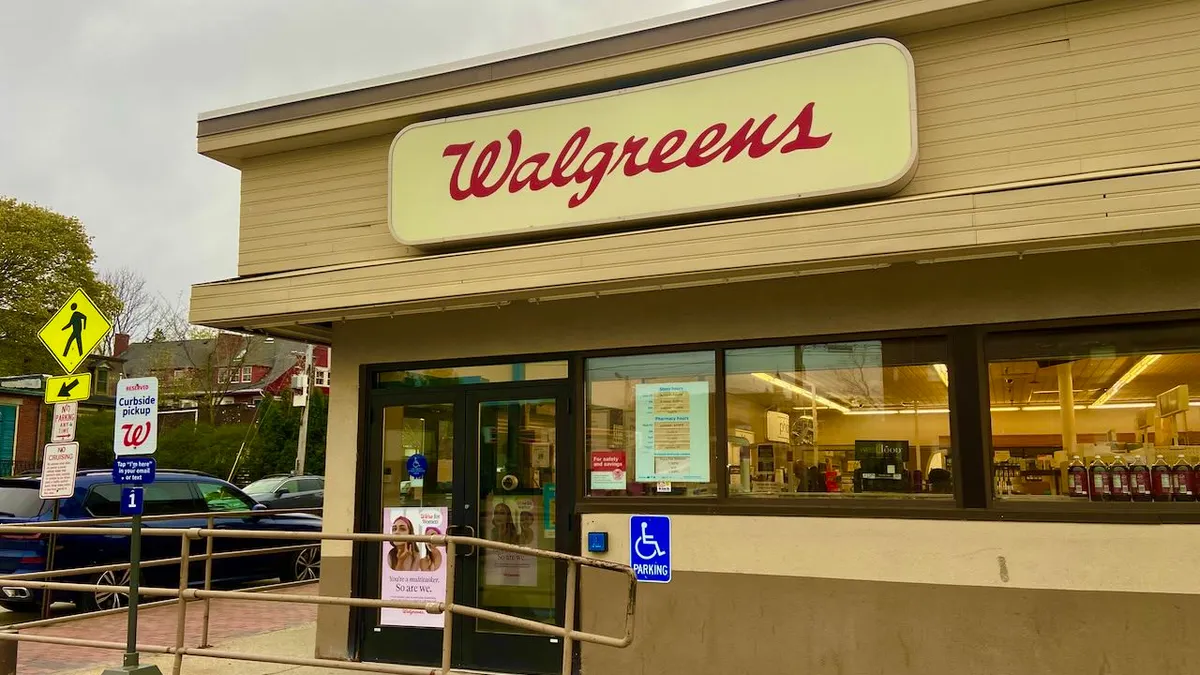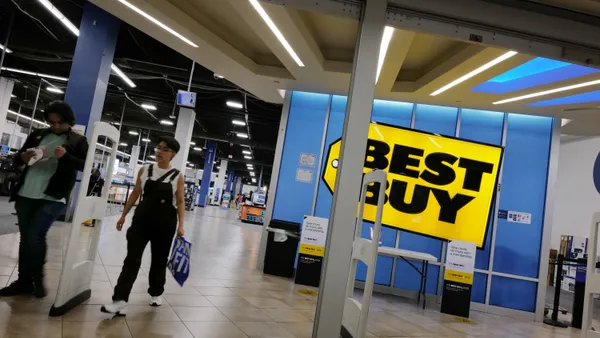Retailers are under the gun these days, as technology and e-commerce disrupt many aspects of the business and the consumer, with plenty of anxiety and yet plenty of choices in a slowly healing economy, wields great power. The job of chief executive, then, is to steer the ship among stormy waters. Some retailers have seen a fair bit of turnover at the spot (see J.C. Penney) while others are actually going forward without (see Abercrombie & Fitch).
There are quite a few retailers whose chief men and women will have a host of challenges in front of them next year, whether they have been at the job for a bit, are returning to the job, or have yet to assume their duties.
“The retail revolution has one clear winner so far: The customer, who has gained increasing control over when, where and how he or she makes a purchase,” Accenture’s Chris Donnelly and Oskar Ebbinghaus wrote this year in their report, The CEO’s new mandate: Own the customer experience. “And while many companies view the consumer’s growing influence as just another marketing challenge, we believe they should instead make it a key part of the CEO’s agenda, given the significant strategic damage that failure in this area could cause.
"This power shift," say Donnelly and Ebbinghaus, "has retailers scrambling to differentiate themselves on the traditional elements of the retail value proposition—product range, price, value and customer service.”
With that in mind, below are a few newly-arrived or yet-to-arrive retail chief executives we will be keeping an eye on in 2016.
1. Brian Cornell, Target
For the first time ever, Target Corp. in 2014 went outside its ranks to find a new CEO, former PepsiCo executive Brian Cornell, who began his duties in August that year. Since then, Cornell has been reconfiguring Target’s leadership, adding cyber-security and tech expertise and moving it up the C-suite, something that was much-needed after the retailer’s high-profile holiday time breach in 2013. To the surprisee of some, Cornell has even replaced the retailer’s longtime merchandising chief, Kathee Tesija, who spent 29 years there.
It appears that Cornell has continued the shift away from the Target's previous tendency of focusing hiring from inside the company, something many said led to an insular culture trapped by tradition. He’s demonstrated a willingness to be bold — abandoning the company’s ill-fated Canadian expansion not long after its launch — and introduced innovative moves like a collaboration with the New York concept store Story.
The key for next year is to find ways to strengthen Target’s e-commerce and omni-channel operations and to wow its customers in store, while also figuring out the right mix of urban to suburban brick and mortar.
2. Jay Schottenstein, American Eagle Outfitters
Having the old boss return as the new boss is sometimes a sign of desperation or a lack of ideas (or both) for a retailer. But Schottenstein was returned to the top spot at American Eagle Outfitters (he also served as CEO from 1992 through 2002) early this month after the teen-focused retailer began to show signs of a turn-around under his guidance in the interim. American Eagle is among the teen apparel brands that lost their way post-recession, unable to capture teens' attention — or dollars — with logo-centric, same-same apparel. The retailer this past summer made a splash to improve its jeans line and moved to scale back promotions. It’s also seen success with its Aerie lingerie line, with a marketing approach for that brand that eschews photoshopping its models.
This fall the retailer announced the acquisition of American designer Todd Snyder’s eponymous menswear label and his Tailgate label for $11 million in cash and stock. The challenge for Schottenstein going forward will be to maintain the retailer’s momentum and differentiation and to incorporate its acquisition of its new Todd Snyder brands into its American-style ethos.
3. Paula Schneider, American Apparel
Schneider has inherited a wealth of challenges: American Apparel has been struggling for years, and last summer’s battles with founder and former CEO Dov Charney cost the company dearly, both in terms of money and focus. That chapter hasn’t yet closed either. Charney and the company he founded remain tangled up in litigation, and he may be working on a return.
Still, Schneider’s approach bodes well. She seems to be working to conserve the retailer’s strengths — its edge, its made-in-America factories — while doing away with its infamies. The questions for American Apparel, which is in dire need of a fashion reboot, are how its collections do under Schneider, whether she can make her mark on the company after all, and how much of a factor Charney continues to be in 2016.
4. Stefan Larsson, Ralph Lauren
With Larsson at the helm of Old Navy for four years before he was drafted by Ralph Lauren, it prospered, outpacing its sister brands, higher-priced Gap and Banana Republic. In 12 of the last 14 quarters, Old Navy has reported same-store sales growth, and in the past four years has accumulated $1 billion in annual sales, a major turnabout. Certainly, Ralph Lauren could use a dose of whatever Larsson was dishing out. Larsson, who also spent 15 years at H&M, has proven global retail merchandising experience and helped grow Old Navy's sales. But because that experience has been mainly at value-priced brands, some questioned the choice for the more upscale Ralph Lauren.
Although Larsson has already taken the reins as CEO, Lauren himself is not entirely abandoning his company. Larsson reports to Lauren and he is remaining as creative director and chairman, characterizing their relationship as a “partnership.”
If Lauren is interested in bringing in some hybrid of fast-fashion to the struggling, if still iconic, apparel company, the top spot is in good hands. It’s more likely that he sees Larsson as a savvy, young (and therefore ideal) candidate to mentor and partner with during a rapidly evolving time at the company and in retail in general.
5. Marvin Ellison, J.C. Penney
Previous J.C. Penney CEO Mike Ullman had come out of retirement to take over and undo some of what was widely perceived as damage done by Ron Johnson, who probably attempted too much too soon at the department store retailer.
But returning to the old ways is not a good long-term strategy most of the time. Ellison, who arrived this summer from Home Depot where he most recently was executive vice president of stores, is known for his operational savvy and has been credited with narrowing the performance gap between Home Depot and rival Lowe’s. He did so in part by maximizing supply chain efficiencies, what Ellison calls the “science” of retailing and something that’s needed at Penney.
Ellison is also counting on technological upgrades as the retailer tries to come from behind in e-commerce. Look for the retailer to continue to capitalize on its successful partnership with Sephora and introduce more e-commerce, omni-channel, and mobile efforts.
6. Ernie Herrman, TJX Cos.
Highly regarded TJX CEO Carol Meyrowitz is an industry veteran who has been with the company for some 30 years. Under her leadership, TJX Cos. muscled through the down economy, capturing the attention and dollars of people in need of a bargain and of others on the hunt for a treasure. Experts predict that TJX and rival off-price retailers Ross and Burlington, will continue to see steady growth of 6% to 8% in the next five years, above the 4% predicted for the rest of retail.
Naming Herrman to take over from Meyrowitz next year is a sign that the company is quite comfortable with its momentum. Herrman is a merchandising veteran—one of the company’s strengths—and a veteran of TJX itself, having been there since 1989 and as senior executive vice president since 2007. What he may face in 2016 and beyond is a burgeoning number of competitors in the space, as department stores like Macy’s and others increasingly get in the off-price retail game.
7. Stephen Smith, LL Bean
Smith is the fourth president-CEO of L.L. Bean and the first who wasn’t born a Bean or worked his way up the company ladder. The company has pivoted well from its paper catalog business to e-commerce and was among the first retailers to offer free shipping and free returns on any size order in an effort to combat online shopping cart abandonment.
The retailer has remained strong, recently even experiencing a surge in popularity to the point of having supply issues of its iconic hunting boot, which has become a favorite of hipsters, college kids, and fashion mavens, as well as of its traditional customer.
Smith has held executive roles at Wal-Mart’s international businesses and at an e-commerce venture in China. The question before him will be how to continue to grow the company without losing sight of the traditions that have been the source of its success for more than a century.






















